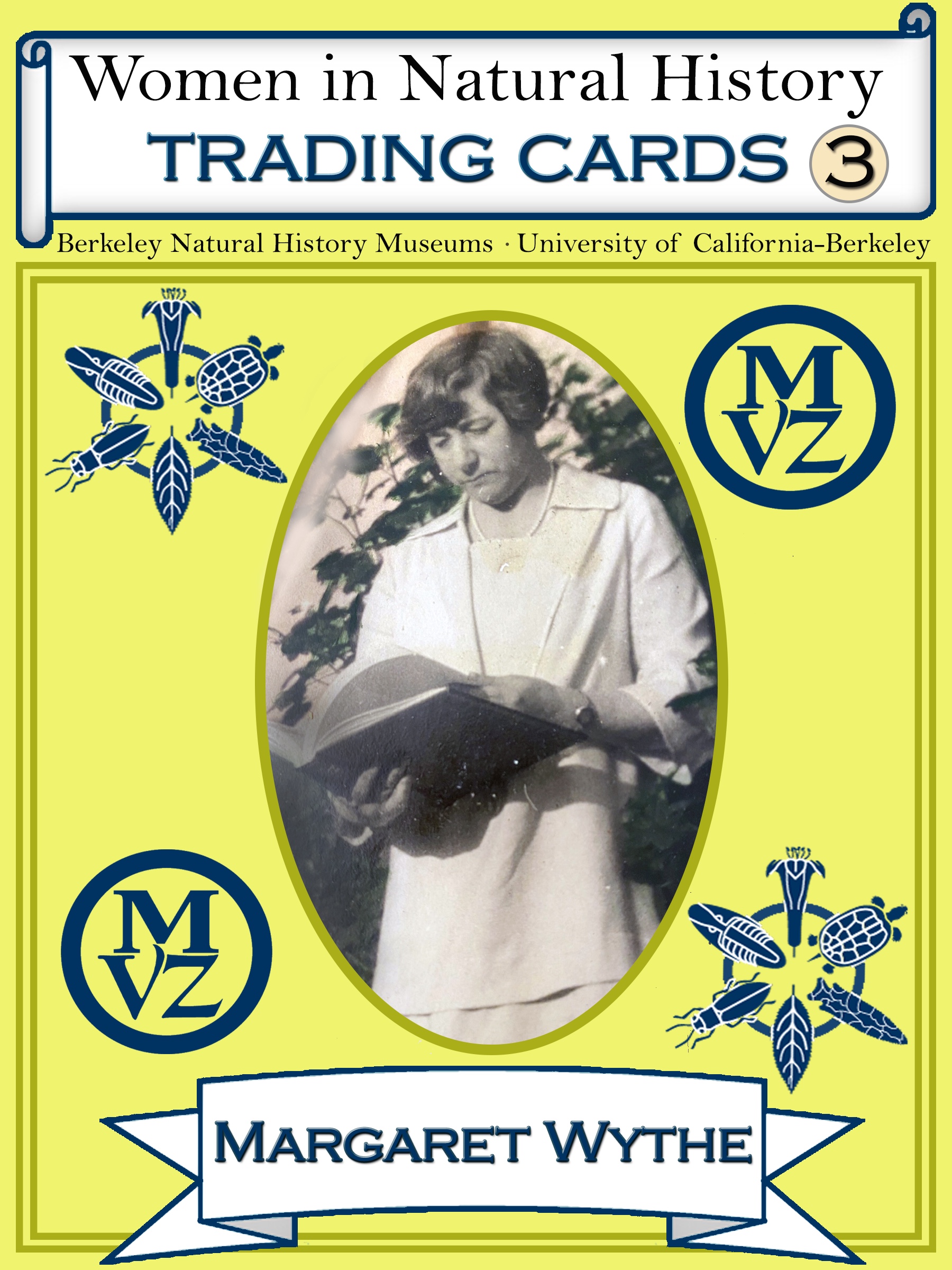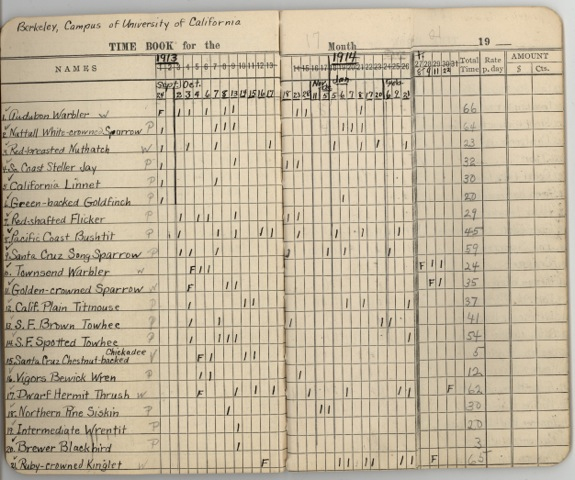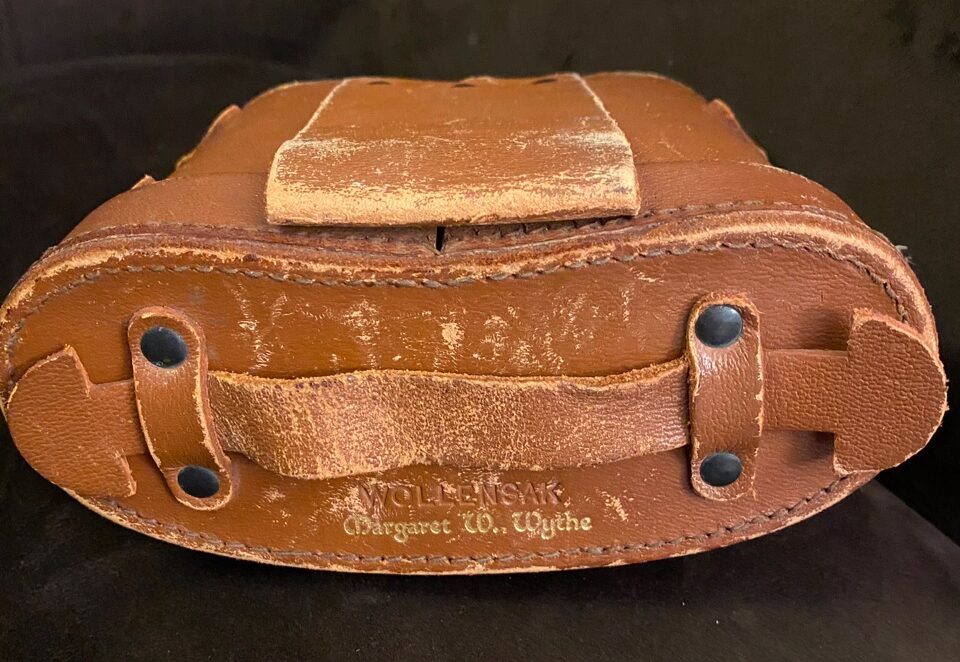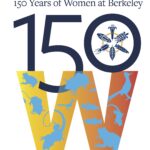
Margaret Wythe was born in 1880 in Oakland, California. She was named after her aunt, Dr. Margaret Wythe, an educator and medical director. Her grandparents, both doctors, immigrated from England in 1835, and eventually settled out west in Oregon. Margaret was introduced to science at a young age. In middle school and high school, she attended summer sessions on natural history and zoology (1893, 1894, and 1898) at Stanford University’s Hopkins Seaside Laboratory in Pacific Grove, California. After graduating from Oakland High School in 1900, Margaret remained close to home, studying at UC Berkeley. Her older brother had attended engineering school at UC Berkeley and continued to teach there for more than 20 years. Margaret graduated with a Bachelor’s in History in 1910.
After completing her undergraduate degree Margaret remained at Berkeley and pursued a master’s in zoology. In 1912 she was hired as the Museum of Vertebrate Zoology (MVZ) director Joseph Grinnell’s assistant at an hourly wage of 35 cents. At the time, her weekly salary of $10.50 was slightly higher than the average worker’s weekly income of $7.96, which reflected her degree and specialized skills. Adjusting for inflation, in 2021 she would have been paid roughly $9 an hour, still lower than the current California minimum wage of $12 an hour.
Margaret was well known for her skill in identifying birds by their song alone and she used her lunch breaks to gather data on bird species around campus. From 1913-1918 Margaret systematically surveyed the campus bird population taking detailed notes and observations. As a student of Grinnell, Margaret made meticulous field note-taking part of her daily routine; gathering evidence and objective insight on species, habitat usage, and distribution. In 1919, she became one of sixteen charter female members of the American Society of Mammalogists. Margaret completed her master’s in zoology in 1923, and submitted her thesis “A Distributional Study of the Birds of the Gold Lake Region, Plumas County, CA.”

After graduating, Margaret continued to work with Grinnell, and in 1925, she was promoted to assistant curator of birds, becoming the museum’s first full-time female curator. In 1927, she co-authored the Directory to the Bird-Life of the San Francisco Bay Region with Grinnell. Margaret created most of the base maps of species distributions for the book. She also contributed maps to Grinnell and famed ornithologist Aden Miller’s 1944 publication, Distribution of the Birds of California.
In addition to her work at the MVZ, Margaret spent almost a decade (1927-1936) as the inspector of foreign birds for the United States Bureau of Biological Survey. On the academic side, she continued to publish papers and was noted for her research on White-throated Sparrow and the Tolmie Warbler in the Yosemite Valley. Margaret worked at the MVZ until her retirement in 1945.

Image courtesy of the Wythe Family.
In 2006, ninety-three years after Margaret began her initial campus bird survey, Allison Shultz, an undergraduate student at the MVZ, replicated Margaret’s surveys in order to understand the impact of urbanization on bird communities over the last century. Allison, along with MVZ researchers, sought to identify whether changes in the distribution of avian populations were due to diversity decay, homogenization, or species community-composition turnover. In her senior thesis and later a publication (2012), Allison found that while the overall diversity of bird species on campus remained constant, the species which made up those communities had changed drastically in response to landscape changes. Allison described Wythe’s meticulous field notes as an “excel sheet” and acknowledged that it would not have been possible to conduct her surveys without these detailed field notes.
Animal Life in Yosemite, Tolmie Warbler Species Account, 1924.
Directory to the Bird-Life of the San Francisco Bay Region
Distribution of the Birds of California
Kohrs, Donald. Hopkins Seaside Laboratory of Natural History, “Chapter 5: the Penikese of the Pacific.” 2013.
Rothstein, Stephen I. In Memoriam: Barbara Blanchard Dewolfe, 1912–2008, The Auk, Volume 127, Issue 1, 1 January 2010, Pages 235–237.
Sanders, Robert. “Campus Still a Great Place for Birds, Despite Century of Changes.” Berkeley News, July 23, 2012.
Shultz, Allison J., Morgan W. Tingley, and Rauri C. K. Bowie “A Century of Avian Community Turnover in an Urban Green Space in Northern California,” The Condor 114(2), 258-267, (1 May 2012).
Stein, Barbara R.. Women in Mammalogy: the Early Years, Journal of Mammalogy, Volume 77, Issue 3, 16 August 1996.
Wythe, Margaret W.. The White-Throated Sparrow in Western North America, The Condor, Vol. 40, No. 3, May – June, 1938.

